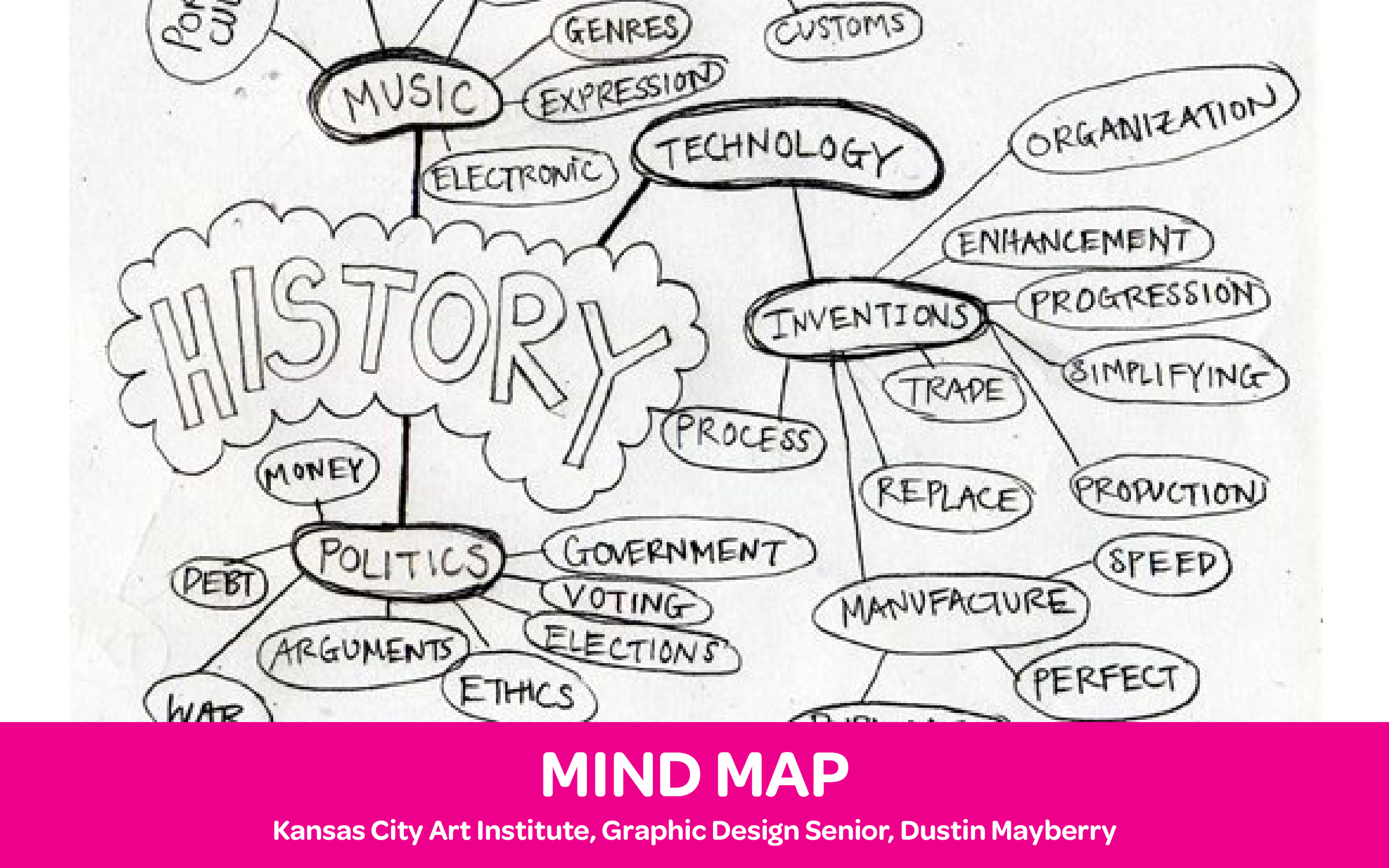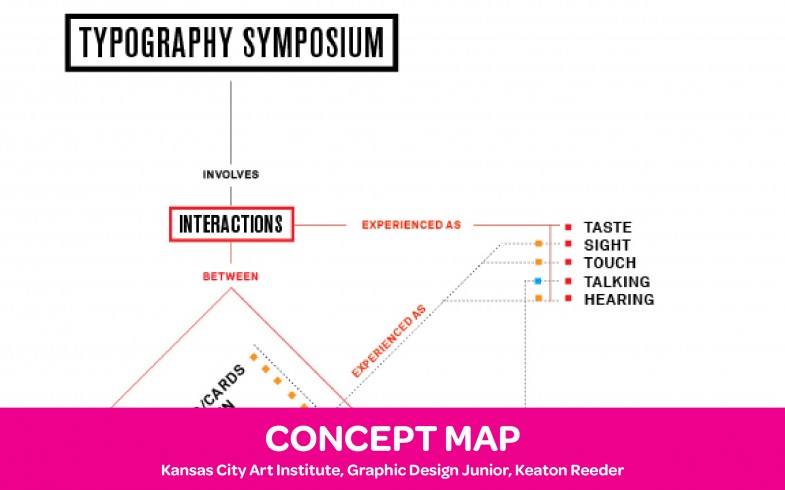When cartographers make maps, they organize content according to relevancy, translate physical realities into visual representations and position elements to communicate messages. Designers appropriate these cartographic approaches and apply them to communication problems.
Mind Maps = Brainstorming
Mind maps are quick, low-stakes diagrams that help generate ideas, develop themes, create naming conventions and much more. A mind map is structured like a tree, with related ideas branching out from a single word or theme. Starting from the center, you add associated words freely as they come to mind. It works much like a visual thesaurus might, growing to include closely related, tangential and antithetical words. Mind maps are great for brainstorming at the onset of a project. The flat spatial organization prevents certain topics from looking more important; this lack of visual hierarchy keeps all ideas on a level playing field for the time being. The only anchor in the map is the beginning central word or theme.
Concept Maps = Visualizing Connections
Academic Joseph Novak introduced concept maps in the 1970s as a means to represent complex knowledge to students. They continue to be used in educational and creative contexts to visualize complex ideas and relationships. Unlike mind maps, concept maps utilize two main elements: nodes, which contain big ideas (written as nouns) and links (written as verbs) that connect ideas. When combined, the nodes and links create complete sentences within the map. This creates both a written narrative and a visual manifestation of the concept.
Concept maps allow big picture concepts and smaller connections to be viewed simultaneously. This means of externalizing concepts is helpful for team projects where all participants need to have a shared understanding of a complex problem. When working solo, concept maps can be a means of clarifying obscure connections and revealing unconsidered relationships. The structure of a concept map is not anchored by a central word, like in mind maps; this allows the designer to convey meaning through visual hierarchy. Formal choices help to define, and control, the reader’s entry point and experience of the map.
Eye Candy
Designers have long since incorporated rough diagrams into their processes, but recently the concept map has been elevated from process sketch to refined artifact. These maps require that you spend time with them and think critically about the content. They look pretty fab hanging in office spaces too. Beautiful and smart, what else is there?
quick tips
1) Match the map to your task. Do you need to quickly generate ideas and get out of a rut? Go with mind mapping. Need to clarify complex concepts at the problem solving stage? Go with concept mapping.
2) When creating mind maps, work quickly and freely. Let your associations flow and don’t make judgements. There is time for reflection when finished.
3) When creating concept maps, allow yourself plenty of time. Concept mapping requires a great deal of focus, critical thinking and reevaluation.
dig deeper
A Brief History of Mind Maps
Great book that covers concept maps: Learning How To Learn by Novak and Gowin
Detailed Steps of How to Create a Concept Map by Dubberly Design
Eye Candy: Concept Map, The Creative Process by Dubberly Design, Jack Chung, Shelley Evenson, and Paul Pangaro.

